
Muse Science Magazine for Kids
Guardians of the Forest
EARLY, MAKESHIFT WILDLIFE DRONES HELPED TO DETECT AND PROTECT ORANGUTANS.
5 min |
April 2024

Muse Science Magazine for Kids
THE PROBLEM WITH PALM OIL
Palm oil is all around you. It’s in sugary snacks like cookies and candy bars. It’s in lipstick and shampoo and pet food.
2 min |
April 2024

Muse Science Magazine for Kids
ELODIE FREYMANN
When you’re feeling sick, it probably doesn’t occur to you to try eating tree bark.
5 min |
April 2024

Muse Science Magazine for Kids
APE ANTICS
The Whirling World of primate play
6 min |
April 2024

Muse Science Magazine for Kids
Who's Your Cousin?
The great apes are among the most popular animals in most zoos. Their actions, facial expressions, and family life remind us so much of ourselves. Have you ever wondered, though, how we might look to them?
3 min |
April 2024

Muse Science Magazine for Kids
JUSTIN DARNALL
AEROSPACE ENGINEER
3 min |
March 2024

Muse Science Magazine for Kids
THE POWER OF TIDES
THE PUSH AND PULL OF MOONS WITH THEIR HOST PLANETS
4 min |
March 2024

Muse Science Magazine for Kids
WHO OWNS THE MOON?
INDIA LANDED AN UNCREWED SPACECRAFT ON THE MOON FOR THE FIRST TIME IN AUGUST 2023. Japan just reached the Moon for the first time with a robotic spacecraft in January. And in 2026, the United States is set to land astronauts on the Moon for the first time in more than half a century with its Artemis III mission.
2 min |
March 2024

Muse Science Magazine for Kids
Ready, Set, Eclipse!
AN OBSERVER'S GUIDE TO THE TOTAL SOLAR ECLIPSE ON APRIL 8, 2024
6 min |
March 2024

Muse Science Magazine for Kids
The Truth About Pluto
THEN ONE DAY IT WASN'T A PLANET. THE END.
4 min |
March 2024

Muse Science Magazine for Kids
New Moons of Saturn
A NEW DISCOVERY IS CHANGING THE WAY WE THINK ABOUT THE MOONS IN OUR SOLAR SYSTEM.
4 min |
March 2024

Muse Science Magazine for Kids
INVESTIGATING ICY MOONS
The Search for Hidden Oceans-and Extra-Terrestrial Life
5 min |
March 2024

Muse Science Magazine for Kids
To the Moon-and Beyond!
NASA'S ARTEMIS PROGRAM IS SET TO RETURN HUMANS TO THE MOON AFTER MORE THAN HALF A CENTURY.
2 min |
March 2024

Muse Science Magazine for Kids
EDWARD ASHTON
ASTRONOMER
3 min |
March 2024

Muse Science Magazine for Kids
(Don't) Fly Me to the Moon
WAS IT A CONSPIRACY? NOPE. BUT NO-MOONIES ARE SKEPTICAL ANYWAY.
5 min |
March 2024

AppleMagazine
A Six-Planet Solar System in Perfect Synchrony Has Been Found in the Milky Way
Astronomers have discovered a rare in-sync solar system with six planets moving like a grand cosmic orchestra, untouched by outside forces since their birth billions of years ago.
2 min |
December 08, 2023

Muse Science Magazine for Kids
Are plants aware of themselves?
Sure, scientists noticed one of my special skills. But most people are still overlooking my epic poetry.
2 min |
November/December 2023

Muse Science Magazine for Kids
SUSTAINABLE AVIATION EXPERT
REDUCING AIRPLANES' CARBON EMISSIONS
3 min |
November/December 2023
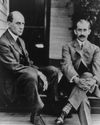
Cobblestone American History Magazine for Kids
Two Brothers From Ohio
Most people do not realize that the Wright brothers—Wilbur, born in 1867, and Orville, born in 1871—performed various scientific experiments before inventing their aircraft. For as long as anyone in their hometown of Dayton, Ohio, could remember, the Wright boys had worked on mechanical projects.
4 min |
November/December 2023

Muse Science Magazine for Kids
THE TROUBLE WITH TRANSPORTERS
Quantum teleportation has been achieved. But can it work for people?
4 min |
November/December 2023

Muse Science Magazine for Kids
THE FORMULA FOR FLYING
Want to fly? Then you must balance these four forces.
3 min |
November/December 2023
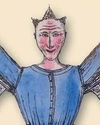
Cobblestone American History Magazine for Kids
THE IDEA MEN
People dreamed of flying thousands of years before the Wright brothers found success near Kitty Hawk, North Carolina. These dreamers, such as Leonardo da Vinci, studied birds flying and imagined how humans might do the same—if only they had wings. Other men developed a more hands-on approach to the topic. Early inventors made wings of cloth, glue, and feathers and tied these creations to their arms in an attempt to imitate nature.
3 min |
November/December 2023
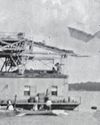
Cobblestone American History Magazine for Kids
A Helping Hand
May 6, 1896. A group of people who had gathered beside the Potomac River, just south of the U.S. capital, grew quiet. Then, it erupted in cheers as a small, unmanned aircraft took to the skies and flew for more than half a mile. The flight came seven years before the Wright brothers’ first manned, powered flight. The inventor of the aircraft was Dr. Samuel Pierpont Langley.
2 min |
November/December 2023
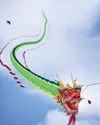
Cobblestone American History Magazine for Kids
Silken Wings
Seven hundred years before the Wright brothers began experimenting with human flight, the Chinese had already mastered its secrets—with kites.
2 min |
November/December 2023

Muse Science Magazine for Kids
PTERO-SOAR
Tomorrow's High-Tech Aircraft May Use Secrets From the Days of the Dinosaurs!
5 min |
November/December 2023

Cobblestone American History Magazine for Kids
GROWTH OF AN INDUSTRY
After their historic flight at Kitty Hawk in 1903, Wilbur and Orville Wright returned to Dayton, Ohio. They spent the next few years making adjustments and building additional versions of their powered aircraft in their bicycle shop.
3 min |
November/December 2023

Muse Science Magazine for Kids
TAKING OFF TOWARD A GREENER FUTURE
Efforts to make flying sustainable
5 min |
November/December 2023

Muse Science Magazine for Kids
PLANES Made of PLANTS
Scientists are looking for creative ways to reduce airplanes' carbon footprints by making them fly more efficiently and developing sustainable fuels. But what about the materials in the planes themselves?
2 min |
November/December 2023

Muse Science Magazine for Kids
The QUEST for QUIET, QUICK PLANES
Supersonic Flight Could Be Making a Comeback
4 min |
November/December 2023
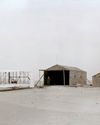
Cobblestone American History Magazine for Kids
WHY KITTY HAWK?
The Wright brothers searched carefully for the best place to test their gliders and flying machines. Their main concern was for good, steady winds. But they also hoped to find a remote location to allow them to perform tests away from the public eye.
1 min |